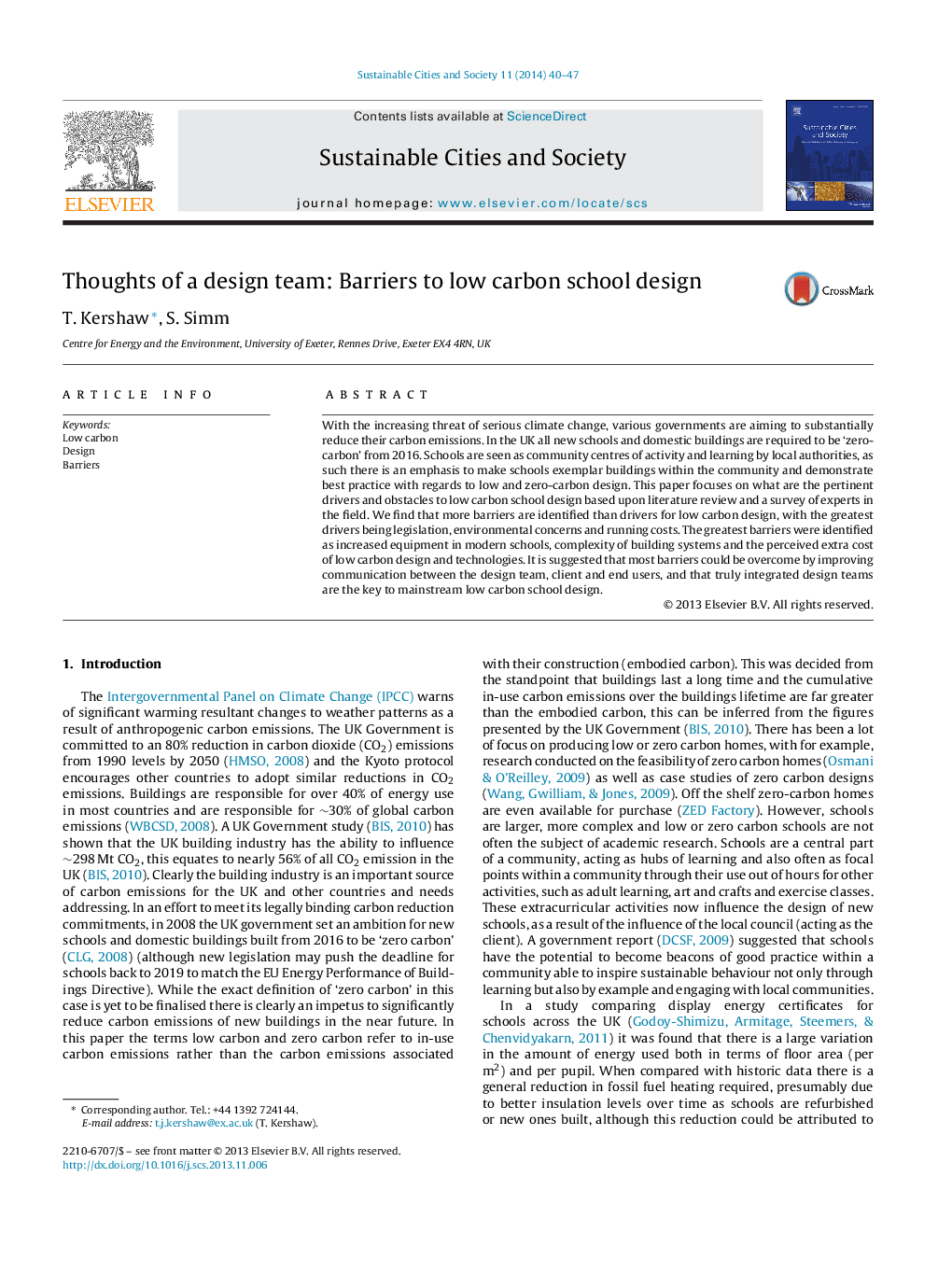| Article ID | Journal | Published Year | Pages | File Type |
|---|---|---|---|---|
| 308163 | Sustainable Cities and Society | 2014 | 8 Pages |
•Identification of relevant barriers to low carbon school design.•Delphi study of low carbon school design teams.•Ranking of barriers to low carbon school design.
With the increasing threat of serious climate change, various governments are aiming to substantially reduce their carbon emissions. In the UK all new schools and domestic buildings are required to be ‘zero-carbon’ from 2016. Schools are seen as community centres of activity and learning by local authorities, as such there is an emphasis to make schools exemplar buildings within the community and demonstrate best practice with regards to low and zero-carbon design. This paper focuses on what are the pertinent drivers and obstacles to low carbon school design based upon literature review and a survey of experts in the field. We find that more barriers are identified than drivers for low carbon design, with the greatest drivers being legislation, environmental concerns and running costs. The greatest barriers were identified as increased equipment in modern schools, complexity of building systems and the perceived extra cost of low carbon design and technologies. It is suggested that most barriers could be overcome by improving communication between the design team, client and end users, and that truly integrated design teams are the key to mainstream low carbon school design.
